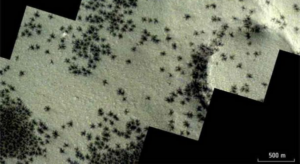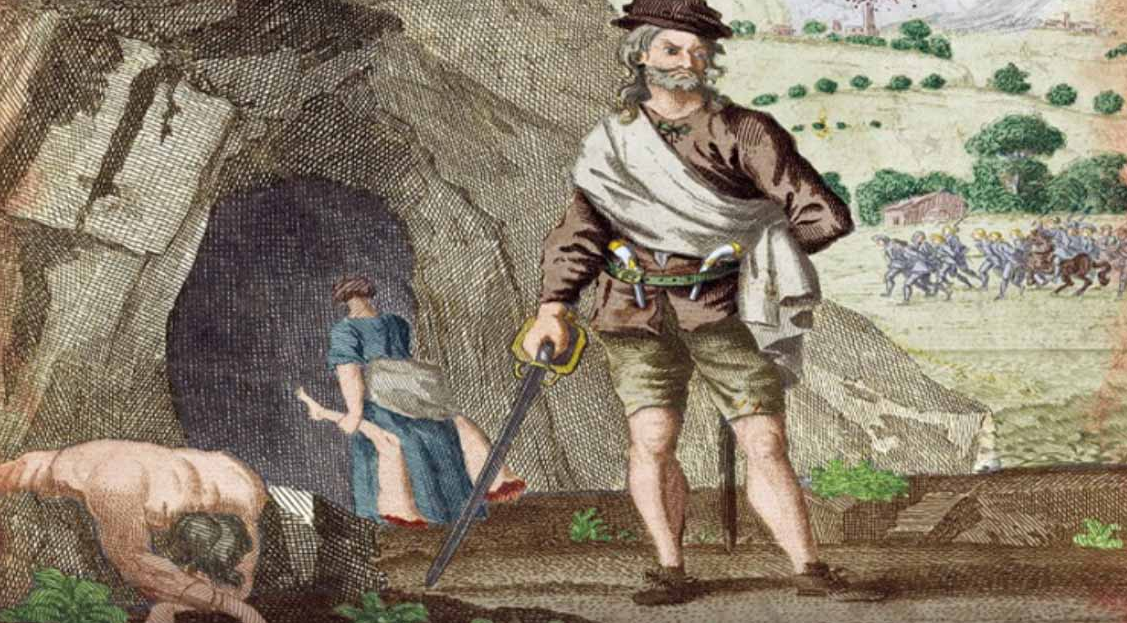ESA’s Mars Express has captured images revealing distinctive formations dubbed “spiders” dispersed across the southern polar region of Mars. These features are caused by a fascinating interplay of seasonal changes and geological processes.
During the Martian winter, layers of carbon dioxide accumulate on the surface. Then, with the arrival of spring, sunlight penetrates the surface to cause a transformation.
Solid, Liquid, Gas
The European Space Agency’s Mars Express exploration has found that the bottom layer of carbon dioxide ice transitions directly into gas, exerting pressure and rupturing the overlying ice slabs. As this gas escapes to the surface, it carries dark dust particles, creating towering fountains or geysers that disperse the material across the landscape.

(Thousands of the “spiders” can be seen dotting the landscape – European Space Agency)
The “spiders” observed on Mars are believed to stem from the interaction of sunlight with layers of frozen carbon dioxide on the planet’s surface. Located at Mars’s south pole, where temperatures can plummet as low as –243 degrees Fahrenheit (-152.778 °C) the frigid conditions cause carbon dioxide in the atmosphere to freeze into solid ice.
Hotel owners in Halkidiki were Russian spies, claims Russian website ‘The Insider’
The ejected dust settles on the surface, forming dark spots ranging from 45 meters (145 feet) to 1 kilometers (0.6 miles) in diameter. These spots serve as indicators of the underlying geological activity. The process also carves intricate spider-shaped patterns beneath the surface enhancing the peculiar landscape.
ESA’s Mars explorers, particularly the ExoMars Trace Gas Orbiter (TGO) in 2020, have provided a detailed glimpse of the intricate spider-like patterns etched across the Martian surface, reports Live Science. In contrast to the Mars Express imagery, which showcases the dark spots resulting from escaping gas and material, the TGO’s perspective unveils the delicate, tendril-like channels carved into the icy terrain below.
An ”Inca City”
These dark spots, visible throughout the Mars Express image, cross rugged hills and expansive plateaus. They are particularly concentrated in a dark close to what has been affectionately dubbed an “Inca City”.
Continue here: Ancient Origins


































